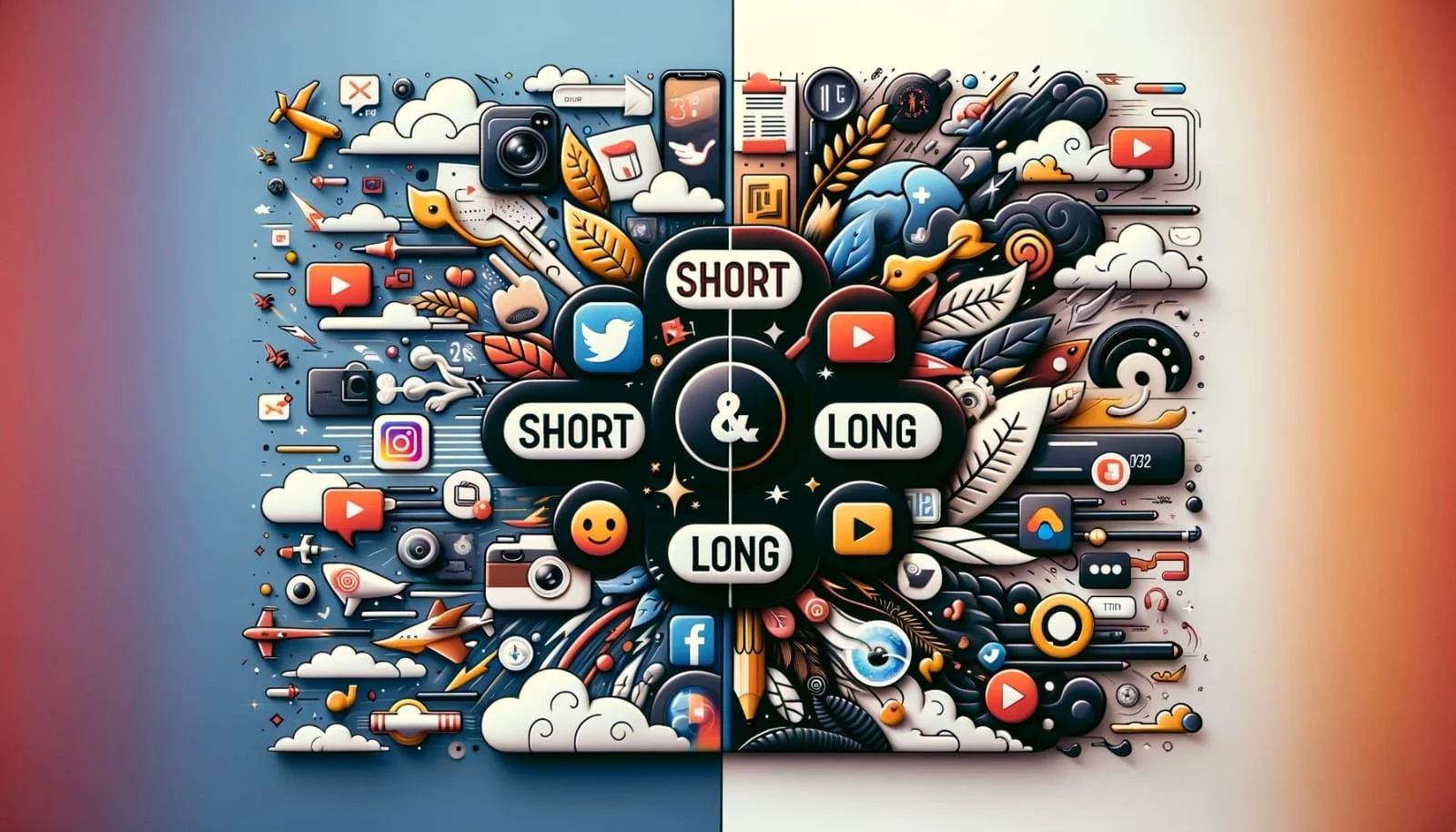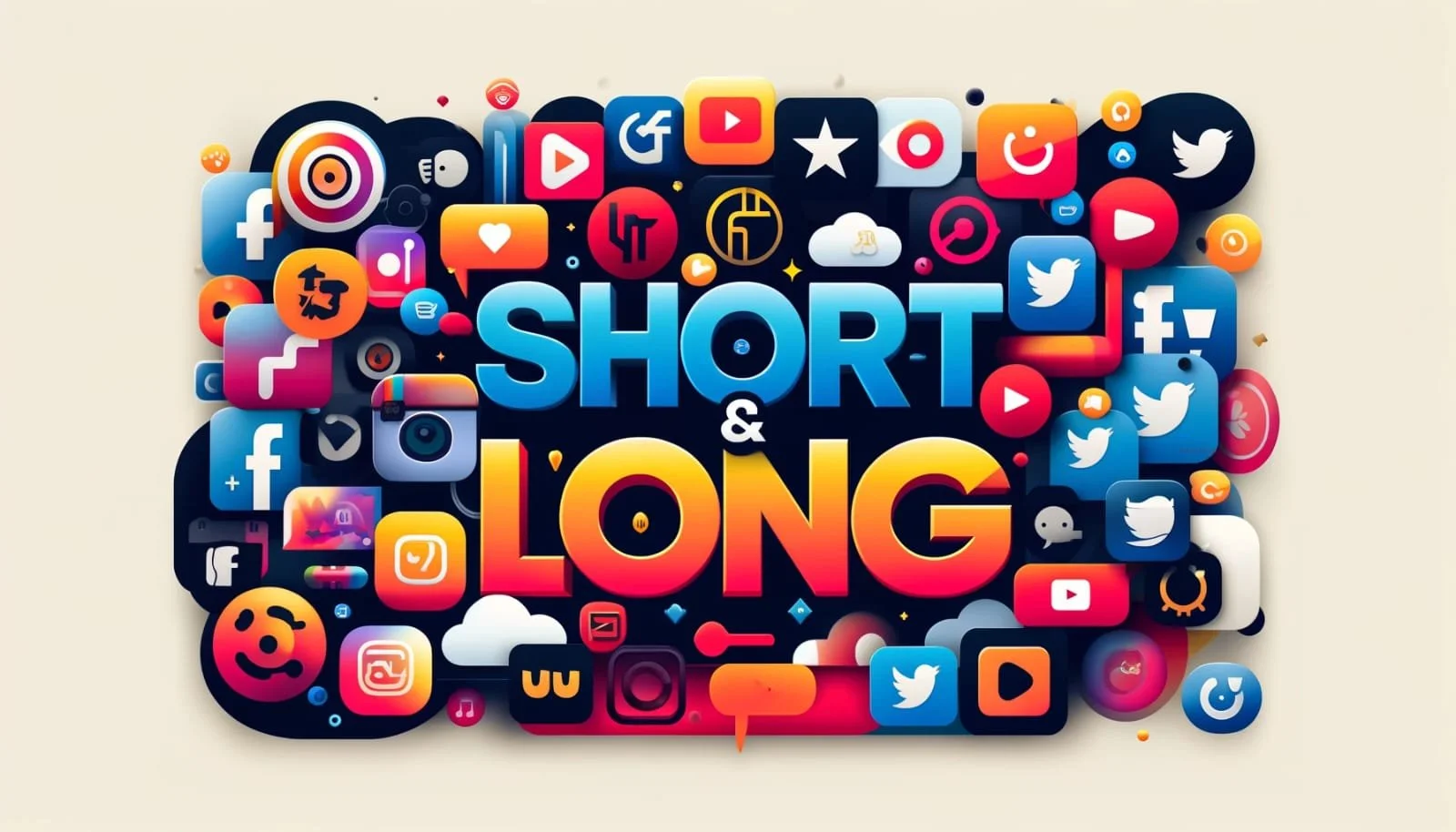Short vs. Long Format
Choosing the Right Storytelling Approach for Your Brand
Introduction:
In the world of content creation, brands are faced with a critical decision: should they deliver their message in short or long format? In this blog post, we'll explore the pros and cons of each approach, discuss budget considerations, and explore how different social platforms and access points can impact your storytelling strategy.
Short Format Storytelling: Short-form content, such as quick videos, GIFs, and social media posts, has gained popularity for its ability to capture attention in today's fast-paced digital landscape. We'll discuss the advantages of short format storytelling, including its ability to convey key messages quickly, engage audiences with bite-sized content, and optimize for mobile consumption.
Pros:
Quick and concise delivery of key messages
Ideal for capturing short attention spans
Highly shareable on social media platforms
Cost-effective production compared to long format
Cons:
Limited depth and detail compared to long format
Less opportunity for nuanced storytelling
Difficulty in conveying complex ideas or narratives
Long Format Storytelling: Long-form content, such as blog posts, articles, podcasts, and documentaries, offers brands the opportunity to delve deeper into their narratives and engage audiences on a more profound level. We'll explore the benefits of long format storytelling, including its ability to build credibility, establish thought leadership, and foster meaningful connections with audiences.
Pros:
Allows for in-depth exploration of topics and narratives
Builds credibility and authority within your industry
Facilitates emotional engagement and connection with audiences
Ideal for conveying complex ideas, stories, and arguments
Cons:
Requires more time and resources to produce compared to short format
May have a smaller audience reach compared to short format
Requires audience investment of time and attention
Budget Considerations: We'll discuss how budget considerations play a crucial role in determining whether short or long format storytelling is the right choice for your brand. Factors such as production costs, distribution channels, and audience size and engagement will influence your budget allocation and resource allocation.
Choosing the Right Approach: We'll provide guidance on how to determine which storytelling approach is best suited for your brand, taking into account factors such as your brand identity, target audience, marketing objectives, and available resources. Whether you opt for short or long format storytelling, the key is to align your approach with your brand's goals and audience preferences.
Social Platforms and Access Points: Finally, we'll explore how different social platforms and access points can impact your storytelling strategy. From Instagram stories to YouTube videos to blog posts, we'll discuss the unique advantages and challenges of each platform and how to leverage them effectively in your storytelling efforts.
Conclusion: In conclusion, the decision between short and long format storytelling depends on a variety of factors, including your brand identity, audience preferences, marketing objectives, and budget considerations. By carefully considering these factors and aligning your storytelling approach with your brand's goals, you can create compelling content that resonates with your audience and drives results.


